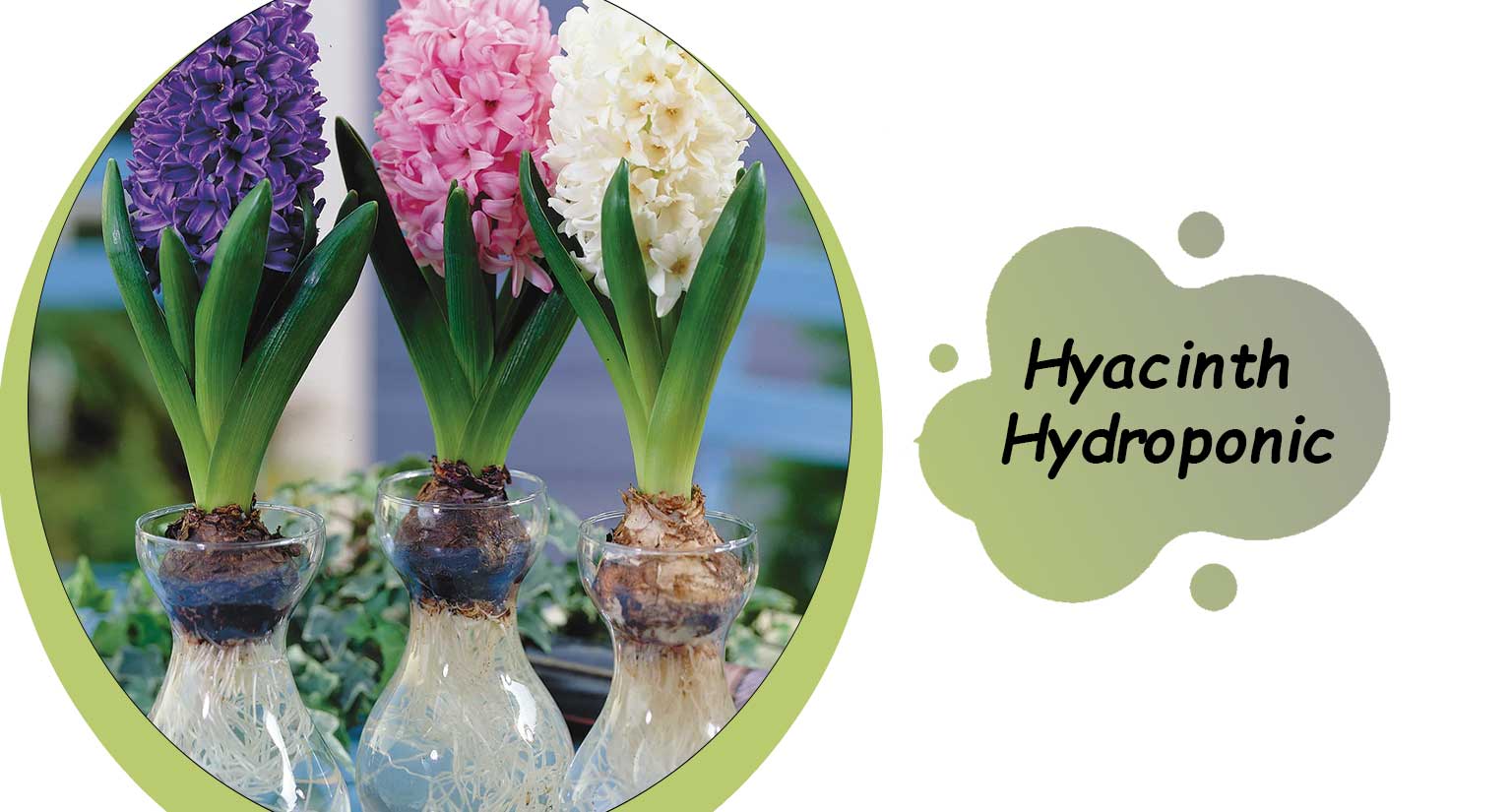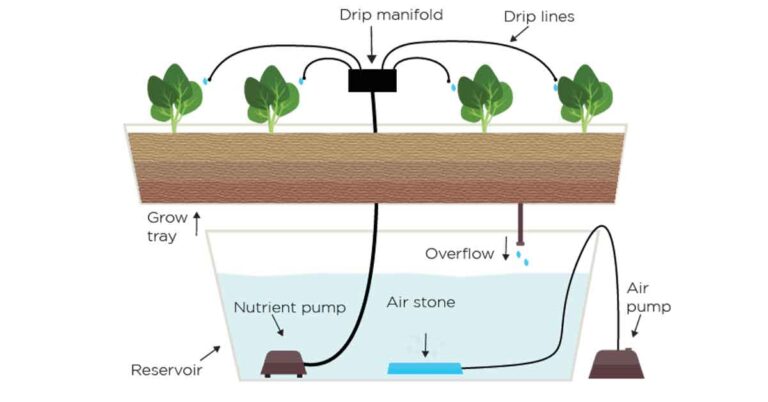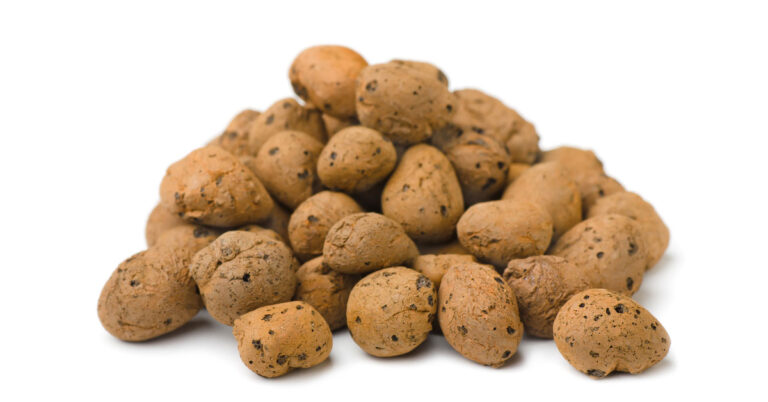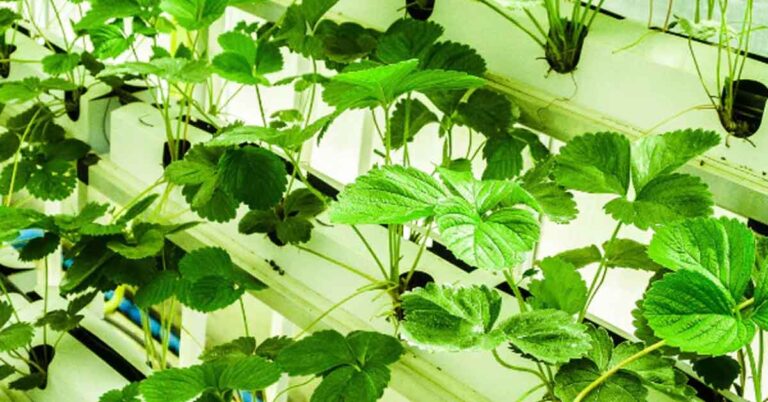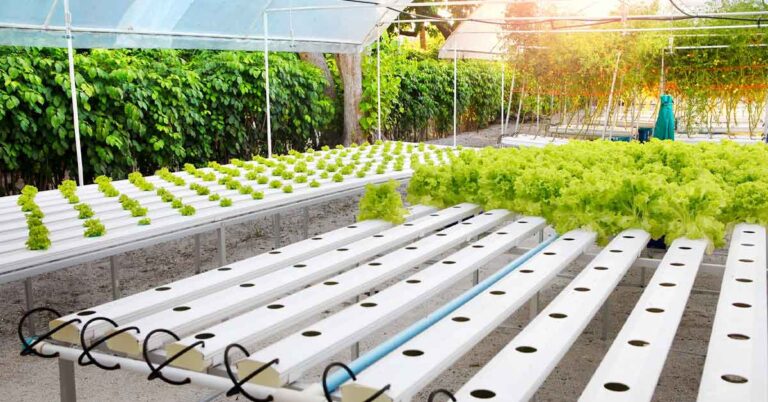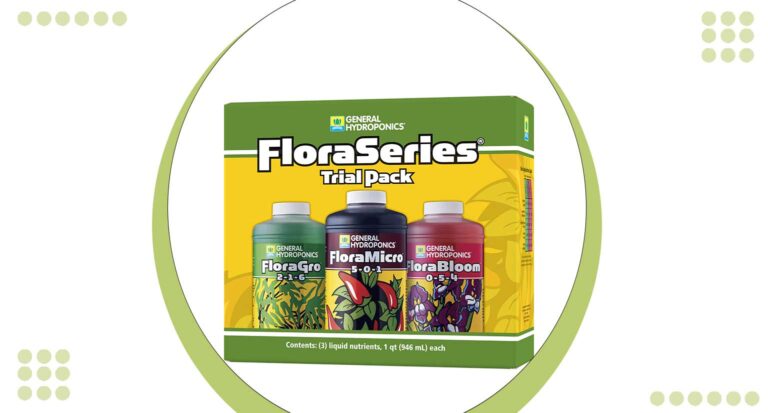Hyacinth Hydroponic
Hyacinths cultivated through hydroponics offer a modern and efficient approach to growing these beloved flowers. Embracing hydroponic methods, Hyacinth Hydroponic systems provide a controlled environment where roots are nourished directly by nutrient rich solutions, eliminating the need for traditional soil.
This innovative technique not only enhances growth rates but also ensures optimal nutrient absorption, fostering healthier and more vibrant hyacinth blooms.
Hydroponic cultivation of hyacinths involves carefully managing water, nutrients and environmental conditions to maximize plant health and productivity. By harnessing advanced hydroponic technologies, growers can mitigate soil borne diseases and cultivate hyacinths with improved resilience and nutrient content.
This method appeals to gardening enthusiasts and commercial growers alike, offering a sustainable and space efficient alternative to conventional soil based gardening practices.
With a focus on precision and sustainability, Hyacinth Hydroponic systems represent a forward thinking approach to floral cultivation. By integrating cutting edge technology with traditional horticultural practices, these systems empower growers to achieve superior floral displays while conserving resources and minimizing environmental impact.
What You Need
The first step in hyacinth hydroponics is understanding the necessary equipment. This includes a hydroponic system, such as an aeroponic or deep water culture system, as well as containers for growing the hyacinths in. You’ll also need nutrients, like liquid fertilizer or powder mix, and pH testing strips to ensure optimal nutrient levels in your solution. Finally, you need to carefully select the right type of hyacinth for your hydroponic system, as some are more suited to soil-based gardening than others.
To successfully grow hyacinths using hydroponic methods, several essential components and conditions must be met. First, a reliable hydroponic system is needed, such as Deep Water Culture (DWC) or a nutrient film technique, to support the plants growth. These systems facilitate the delivery of nutrient rich water directly to the hyacinth roots, ensuring optimal hydration and nutrient absorption without the use of soil.
Next, high quality growing medium is crucial for anchoring the hyacinths and providing additional support. Options like expanded clay pellets or perlite are ideal, as they offer excellent aeration and drainage while retaining enough moisture for the plants. Additionally, a nutrient solution specifically formulated for flowering plants is required to meet the hyacinths’ nutritional needs throughout their growth cycle.
Lastly, maintaining a controlled environment is key to successful hydroponic hyacinth cultivation. This includes regulating temperature, humidity and light to mimic the plants natural conditions and promote healthy growth. Regular monitoring and adjustment of these factors, along with proper maintenance of the hydroponic system, will help ensure vibrant, blooming hyacinths and a thriving hydroponic garden.
What are the ideal conditions for growing hyacinths hydroponically?
To ensure your hyacinths receive the right amount of sunlight, moisture, and air circulation, you’ll want to keep them in an area with temperatures ranging from 65-75°F.
Also, the pH level of the nutrient solution should be maintained at around 6.5 for optimal growth and bloom. As for nutrients, hyacinths require nitrogen, phosphorus, and potassium to stay healthy.
You can use a liquid fertilizer or mix your own powder-based nutrient solution using the specific ratios of each nutrient required for hyacinths.
What are the steps for growing hyacinths hydroponically?
- Start by soaking the roots of your chosen variety of hyacinth in lukewarm water for 2-3 hours to remove any debris or dust.
- Set up your hydroponic system and introduce the nutrient solution into it according to the manufacturer’s instructions.
- Plant your hyacinths in individual containers, ensuring that you bury them deep enough so that the root crown is level with the top of the soil.
- Place your containers into the hydroponic system and adjust the pH levels as necessary according to your testing strips.
- Monitor the progress of your hyacinths daily, ensuring that they receive adequate air circulation and nutrient solution replenishment when needed.
- When your hyacinths are ready, cut their stems and enjoy the beautiful blooms!
What are the benefits of growing hyacinths hydroponically?
1. Enhanced Growth and Bloom Quality
Growing hyacinths hydroponically significantly enhances their growth and bloom quality. The precise control over nutrient delivery ensures that hyacinths receive the exact nutrients they need at each stage of development. This leads to stronger plants with more vibrant and abundant blooms compared to those grown in traditional soil.
2. Reduced Risk of Soil Borne Diseases
One of the key benefits of hydroponic cultivation is the elimination of soil, which reduces the risk of soil borne diseases. Hyacinths grown hydroponically are less susceptible to common soil pests and pathogens, resulting in healthier plants. This advantage minimizes the need for chemical treatments, promoting a more natural and sustainable growing process.
3. Efficient Use of Space
Hydroponic systems are designed to optimize space utilization, making them ideal for both small scale home gardens and large commercial operations. Vertical farming techniques and compact system designs allow for a higher density of hyacinth plants within a given area. This efficiency maximizes yield per square foot, making it a highly productive method for growing hyacinths.
4. Conservation of Water and Nutrients
Hydroponic systems are known for their efficient use of water and nutrients. The closed loop nature of these systems means that water and nutrient solutions are recirculated and reused, significantly reducing waste. This conservation is particularly beneficial in areas with limited water resources, making hydroponic cultivation a more sustainable choice for growing hyacinths.
5. Faster Growth Cycles
Hyacinths grown hydroponically typically experience faster growth cycles compared to those grown in soil. The direct access to nutrients and optimal growing conditions accelerate the development of the plants, allowing for quicker harvests. This rapid growth cycle can result in multiple harvests per year, increasing overall productivity and profitability for growers.
Which hyacinth varieties are suitable for hydroponics?
Hydroponic systems can accommodate various types of hyacinths, making them an excellent choice for those who enjoy the vibrant colors and heavenly fragrance of this flower.
- Blue Hyacinths: Known for their deep, enchanting blue color, these hyacinths are a popular choice among garden enthusiasts. Their dazzling color and rich aroma make them an outstanding pick for hydroponic growth.
- Water Hyacinths (Eichhornia Crassipes): These aquatic plants, native to South America, have adapted over time to live entirely in water, making them a perfect fit for hydroponic systems.
With their beautiful lavender blooms and unique foliage, water hyacinths can not only decorate your hydroponic setup but also help in maintaining the water quality.
Can Hyacinth Bulbs be Grown Using Hydroponics?
Absolutely, hyacinth bulbs are ideally suited to hydroponic growth. Before planting, the hyacinth bulbs must undergo a process called “forcing,” which involves simulating winter conditions to trigger growth.
To do this, place the bulbs in a paper bag and store them in the refrigerator for 12-14 weeks. However, ensure that the bulbs do not come into contact with any fruit, as this can cause them to rot.
After the cooling period, you can start the hydroponic process. Select a hydroponic container or bulb vase that’s deep enough to allow the roots to grow and reach the nutrients in the water.
The bulb should sit at the top of the container, with the roots extending into the water. Ensure that the base of the bulb is not submerged in water, as this can lead to rot.
In a short time, you’ll see green leaves emerging from the top of the bulb. This is a sign that your hyacinth is growing successfully.
With the correct temperature and light conditions, your hydroponic hyacinth bulb will bloom into a beautiful flower, filling your space with its alluring scent and vibrant color.
Not only does hydroponic gardening provide the thrill of growing your own plants, but it also allows you to enjoy the beauty and fragrance of hyacinths year-round.
What types of hydroponic systems are suitable for growing hyacinths?
The choice of hydroponic system depends on your space, budget, and the level of expertise you have with these systems.
The most popular home gardening systems for hyacinths include wick, ebb and flow (or flood and drain), nutrient film technique (NFT), and drip irrigation.
- Wick systems are the simplest to set up and maintain, as they don’t involve any pumps or electricity. This system utilizes a wick to draw the nutrient solution up from the reservoir into the tray where your plants are placed.
The drawback of using this method is that it may not be able to consistently provide enough water and nutrients for large numbers of plants. - Ebb and flow systems are more complex but allow for the efficient distribution of water and nutrients to multiple plants.
This system uses a pump or timer that periodically floods the tray with nutrient solution and then drains it away. - NFT systems are ideal for growing hyacinths due to their ability to provide rapid plant growth in small spaces.
However, they require careful maintenance and regular monitoring as they have a very small margin for error.
When it comes to selecting a hydroponic system for growing hyacinths, the choice depends upon your convenience, space, and the resources you have at hand.
Here are some systems that are particularly well-suited for hyacinth cultivation:
Ebb and Flow
Also known as flood and drain, this system works by temporarily flooding the plant root zone with nutrient solution and then allowing it to drain back.
This process oxygenates the roots and helps in the efficient absorption of nutrients. Hyacinths respond well to this system as it allows for the prevention of overwatering, a common problem when growing bulbous plants.
Deep Water Culture (DWC)
In the DWC system, plants are suspended in nutrient-rich water with their roots submerged and the plant tops are held up by net pots.
This system is perfect for hyacinths as it provides a consistently humid environment that they love, while also ensuring they get all the nutrients they need straight from the water.
Aeroponics:
This system involves misting the roots of the plants with nutrient solution. It provides ample oxygenation, which boosts growth and reduces the chance of disease and pests.
Hyacinths can thrive in an aeroponic system as long as the misting intervals are correctly adjusted to prevent the roots from drying out.
Wick System
The simplest of all hydroponic methods, the Wick system, is ideal for novice hydroponic enthusiasts. It uses a wick to draw nutrient solution from a reservoir to the plant roots, ensuring a constant supply of nutrients to the plant. Hyacinths can grow well in this system as it allows for steady moisture levels, crucial for their growth.
However, irrespective of the system you choose, it is imperative to monitor and maintain the right environmental factors, such as temperature, light, and humidity, to ensure the healthy growth of your hyacinths.
Light and Temperature Conditions
When it comes to light and temperature conditions, hyacinths thrive in a climate with plenty of sunlight, although they can also tolerate partial sun.
Aim to position your hydroponic setup in a location that receives direct sunlight for at least 6 hours each day. A warm, bright spot, such as a south-facing windowsill, can be an ideal location for your hydroponic hyacinths.
In terms of temperature, hyacinths are not fans of freezing temperatures and require a warmer environment to grow efficiently.
The ideal temperature range for growing hyacinths hydroponically is between 60-75°F (15-24°C). It’s important to consistently monitor the temperature to prevent any potential damage to your plants.
By providing the right balance of light and temperature, you’ll be setting your hydroponic hyacinths up for a successful and vibrant growth.
Common Challenges and Solutions
Despite the many advantages of growing hyacinths hydroponically, growers may encounter a few challenges. However, these challenges can be overcome with appropriate knowledge and preparation.
One common challenge is maintaining the plant during the vegetative phase, which typically occurs in colder seasons.
During winter and early spring, the plant’s foliage may start to turn yellow, a sign of nutrient deficiency. To overcome this, it’s crucial to keep the nutrients balanced and regularly monitor the pH levels of the water in your hydroponic system.
Another potential issue is the timing of the blooming season. Hyacinths have a specific blooming period, and if they are not cared for correctly, they may not bloom at all.
To encourage blooming, ensure the hyacinths have a sufficient period of cold weather, followed by a gradual transition to warmer temperatures. This simulates the natural environmental conditions that hyacinths require to bloom.
Remember, every challenge is an opportunity to learn and grow – both for you and your hyacinths! By being proactive and attentive, you can ensure a successful and rewarding hydroponic gardening experience.
How long does it take for a water hyacinth to bloom?
When grown hydroponically, hyacinths typically take around 12 to 14 weeks to bloom once they’ve been chilled and planted.
The chilling period, necessary to simulate the cold weather hyacinths would experience in nature, should last for approximately 13 weeks at temperatures between 35-48°F (2-9°C).
Once this chilling period is over and the bulbs are exposed to warmer conditions, you can expect to see the first signs of growth within 1-2 weeks. The hyacinth will then continue to grow and develop until it reaches full bloom.
Remember, the blooming period may vary slightly depending on the specific variety of hyacinth and the precise growing conditions. Patience is key – the wait will certainly be worth it when you see the stunning, fragrant blooms emerge!
By following a few simple steps, you can successfully use hydroponics to grow beautiful water hyacinths. From selecting the right variety for your climate to regulating temperatures and monitoring pH levels, there are many considerations that come into play when growing plants with hydroponics.
By having an understanding of these factors and providing the necessary care, you can look forward to enjoying lush, vibrant blooms in no time.
What are the steps involved in growing hyacinth hydroponically?
Growing hyacinths with a hydroponic system involves several different steps. First, you will need to select the right variety for your climate and obtain the necessary equipment.
This includes things like an aerated nutrient solution and reliable lighting system. Once everything is in place, it’s time to get started. The process begins with planting the bulbs in an inert medium like perlite or vermiculite, and then transferring them to your hydroponic system.
From there, you will need to monitor the nutrient levels in the water and adjust them as needed for optimal growth. Finally, you must pay attention to the plants’ light exposure and make sure they get enough of both direct and indirect sunlight.
1. Select the Right Hydroponic System
The first step in growing hyacinths hydroponically is to choose the appropriate hydroponic system. Options like Deep Water Culture (DWC) or Nutrient Film Technique (NFT) are ideal for hyacinths. These systems provide the necessary support and nutrient delivery directly to the roots, ensuring optimal growth conditions.
2. Prepare the Growing Medium
Once you have selected the hydroponic system, prepare the growing medium. Use materials like expanded clay pellets, perlite or rock wool to anchor the hyacinth bulbs. These mediums offer excellent aeration and drainage, which are crucial for healthy root development.
3. Plant the Hyacinth Bulbs
Carefully place the hyacinth bulbs into the prepared growing medium within the net pots or growing containers. Ensure that the bulbs are positioned correctly, with the pointed end facing upwards. The bulbs should be snugly fitted into the medium, allowing the roots to spread out and establish themselves.
4. Mix and Maintain Nutrient Solution
Prepare a nutrient solution specifically formulated for flowering plants, ensuring it contains the essential nutrients hyacinths require. Fill the reservoir with the solution and set up the system to deliver it to the plants. Regularly monitor the pH and nutrient levels, making adjustments as necessary to maintain optimal conditions.
5. Control the Environment
Maintain a controlled environment for your hydroponic hyacinths by regulating temperature, humidity and light. Hyacinths thrive in temperatures between 60-70°F (15-21°C) and require sufficient light, either from natural sunlight or grow lights. Ensure proper ventilation to prevent mold and mildew growth.
6. Monitor Growth and Make Adjustments
Regularly check on the hyacinth’s growth, looking for signs of nutrient deficiencies, pests or diseases. Adjust the nutrient solution, light exposure and environmental conditions as needed to support healthy development. Pruning any damaged leaves or stems can also help the plants focus their energy on producing beautiful blooms.
7. Harvest and Enjoy
When the hyacinths have fully bloomed, it’s time to harvest and enjoy their stunning flowers. Carefully cut the blooms at their base and use them for decorative arrangements or gifts. With the proper care, your hydroponic system can continue to produce multiple harvests of hyacinths, providing ongoing enjoyment and beauty.
Tips for Growing Healthy Hyacinths Hydroponically
When growing hyacinths hydroponically, it’s important to keep a few considerations in mind. First, make sure that the water temperature is kept between 65-75°F (18-24°C).
Also, monitor the pH of the nutrient solution and adjust it to optimal levels (usually between 5.5-6.5). Additionally, be sure to check on your plants regularly for signs of pest infestations or disease, and take action if anything is found. Finally, make sure that they get enough light during the day – 6-8 hours is ideal for most varieties.
Conclusion
Adopting Hyacinth Hydroponic systems offers a modern and efficient way to cultivate these beautiful flowers, enhancing growth and bloom quality. By utilizing hydroponic technology, growers can achieve optimal nutrient delivery and environmental control, resulting in healthier and more vibrant hyacinths compared to traditional soil based methods. This innovative approach not only accelerates growth but also reduces the risk of soil borne diseases.
The success of hydroponic hyacinth cultivation hinges on having the right components, including a suitable hydroponic system, high quality growing medium and a balanced nutrient solution. Additionally, maintaining an ideal growing environment through careful management of temperature, humidity and light ensures that hyacinths thrive and produce stunning blooms.
Overall, Hyacinth Hydroponic systems represent a forward-thinking solution for both hobbyists and commercial growers. By embracing this method, individuals can enjoy the benefits of increased efficiency, reduced resource usage and superior flower quality, making it an attractive option for anyone looking to elevate their horticultural practices.

